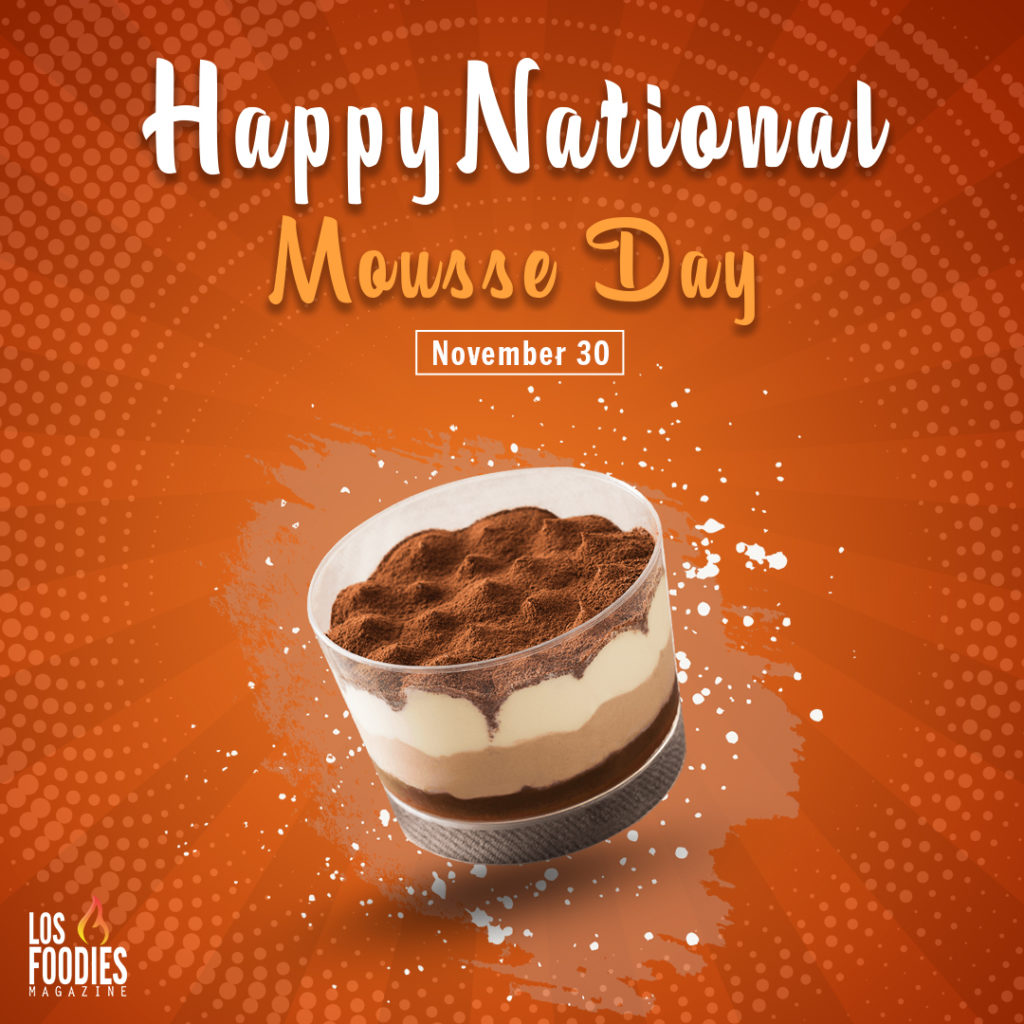National Mousse Day (pronounced moose) can be either sweet or savory. With a fluffy, delicate texture it is more versatile than you might think! Mousse desserts are traditionally made with cream and eggs, whipped to a cloudlike consistency, and served chilled. Other versions are made from only eggs and have a frothier texture. For some amazing inspiration.
Mousse is an egg-based foam created by whipping egg whites or cream into the meringue and poured into a spreadable bowl of ingredients like chocolate, eggs, and butter. Mousse is made up of four elements which are: a foaming agent, thickener, flavorings and sometimes food colorings. The finished product has a soft, creamy and light feel in the mouth.
We love Chocolate Mousse! But we also love a chance. So, why not try a variety of this rich and creamy dessert? Tempting lime – the perfect lemon substitute to take your mousse in another tasty direction. Or, strawberry – add a splash of colour to brighten up your day!

The options are endless. Just layer or swirl in any favorite flavor and you’ve got a delightful new treat!
With a whipped egg foam base, mousse comes in both sweet and savory flavors. Some of the common fruit mousses one can relish include apple, orange, strawberry, raisin, etc. Common meat mousse fillings include chicken livers or game mousse. If you are looking to dig into dessert, chocolate mousse is one of the most popular kinds. This dessert is made by whipping cream into eggs and sugar, adding melted chocolate to the mixture and re-chilling.
Chocolate mousse is probably the most popular dessert in the world. It is made of chocolate, heavy cream, and sometimes eggs. Even though it is French, there are many different variations and adaptations to the original recipe. Some people eat it as a meal, while others use it as a card after dinner. Every culture has changed this dessert in certain ways, whether that be using completely different types of chocolate or adding toppings such as whipped cream or fresh fruit like cherries.
While mousse is traditionally a sweet dessert, it also makes an excellent dip or filling for cakes and baked goods. Its versatility shines brightest when served cold, which gives the mousse a smooth, light, and airy texture that is also temperature-resistant (which makes it especially convenient to prepare ahead of time). Mousses are preferably served cold, even as candy mousses are now and again served frozen. The excellent component of approximate mousse is that it quite simply lends itself to each savory and candy recipe. From a thick salmon mousse as a starter to clean raspberry mousse or the traditional chocolate mousse for dessert, there’s almost no restriction to the flavors that a mousse can embrace. Whereas it additionally works as a filling in pastries and parfaits, a savoury mousse is going nicely with cheese and fruit platters, turning them into handsome appetisers.
“Mousses, delectable savory or sweet concoctions that conjure up images of lavish French cuisine, have been around since the 800s. Many chefs today use heavy cream in their mousses to create a creamy and rich texture. Others use eggs or egg yolks to prepare light and fluffy mousses that melt in your mouth. In many restaurants today, savory mousses are prepared using foie gras, shellfish, avocado, poultry, vegetables, cheese, and other ingredients. Commonly dished out like a light entrée or an appetizer, mousses are often stabilized by adding gelatin to them.”

The Los Foodies Magazine content team is dedicated to showcasing New Mexico’s food culture through stories, recipes, events, and local business features. They create engaging content that connects readers with the chefs, restaurants, and flavors that define the community.
View all posts Los Foodies Magazine Content Team